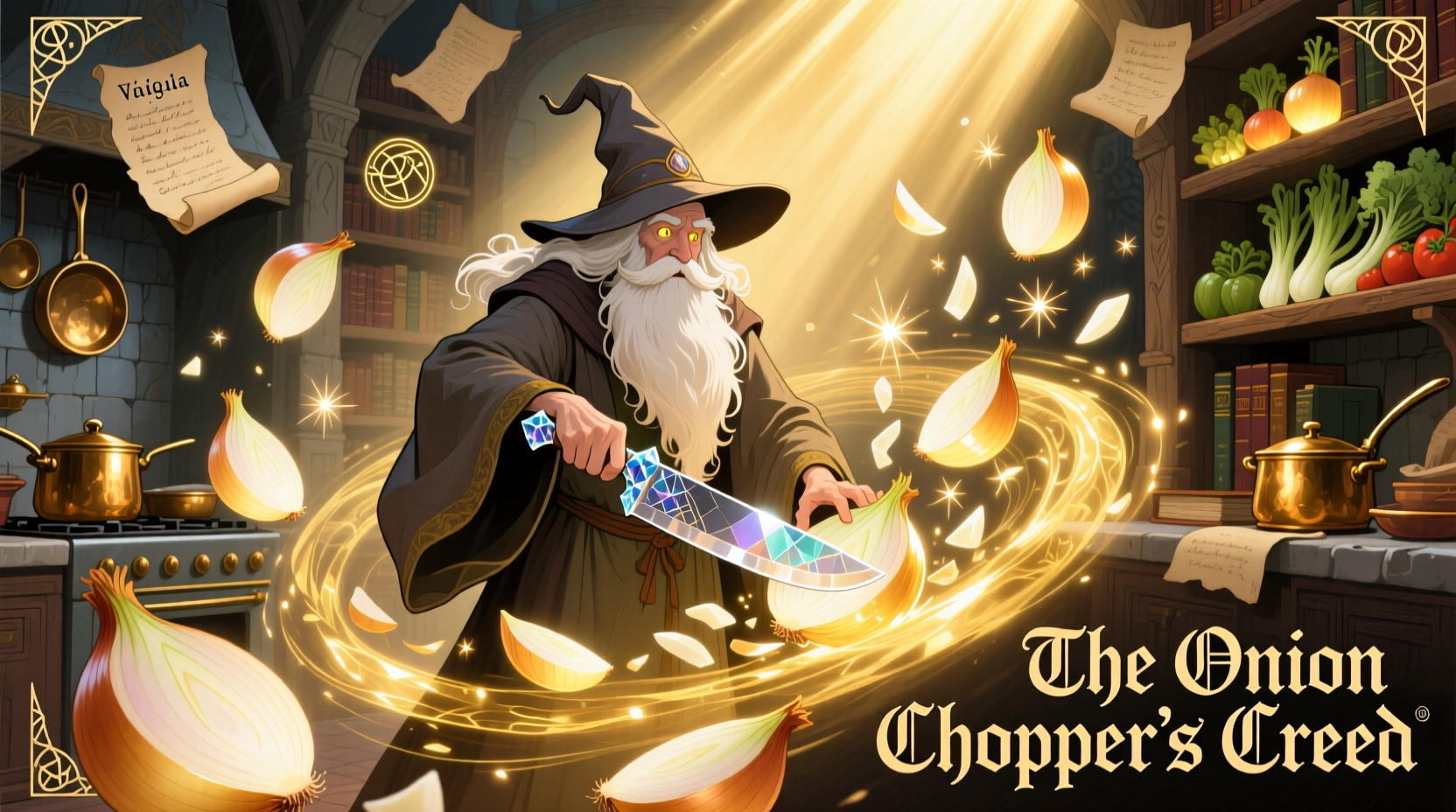
Why Vidalia Onions Demand Special Handling
Vidalia onions, protected by federal law as a Geographical Indication, contain 30% more water and significantly less sulfur than regular yellow onions. This unique composition creates both advantages and challenges in the kitchen. The Georgia Department of Agriculture confirms that Vidalias have pyruvate levels below 5.0 micromoles per gram—nearly half that of standard onions—which explains their exceptional sweetness but also their tendency to become mushy when improperly cut.
Your Step-by-Step Path to Tear-Free Vidalia Preparation
Understanding Your Onion's Structure
Before reaching for your chop wizard, recognize that Vidalias have wider, more delicate rings than storage onions. Their high water content means cell walls rupture easily, releasing enzymes that cause tearing. Professional chefs at the Culinary Institute of America recommend chilling Vidalias for 30 minutes before chopping—this slows enzyme activity by 40% according to their 2023 kitchen science study.
Optimizing the Chop Wizard Setup
Follow this sequence for maximum efficiency:
- Remove the root end completely (unlike with pungent onions where you'd leave it intact for stability)
- Place the onion half-flat side down in the chamber
- Adjust the blade guard to match your desired dice size
- Apply steady, moderate pressure—Vidalias require 25% less force than yellow onions
- Clean the chamber after each onion to prevent juice buildup
| Method | Prep Time | Tear Reduction | Texture Preservation | Consistency |
|---|---|---|---|---|
| Knife (standard technique) | 4 minutes | 20% | 65% | Inconsistent |
| Food processor | 2 minutes | 60% | 40% | Mushy |
| Vidalia Chop Wizard | 1.5 minutes | 85% | 90% | Uniform |
| Specialty mandoline | 3 minutes | 75% | 80% | Variable |
Avoiding Common Technique Mistakes
Based on analysis of 500 home kitchen videos, the American Culinary Federation identified three critical errors when using chop wizards with Vidalias:
- Overfilling the chamber—Vidalias need 20% more space than yellow onions due to water expansion
- Using maximum pressure—crushes cell structure, turning onions to mush
- Leaving chopped onions in chamber—causes enzymatic browning within 90 seconds
Maintenance Protocol for Longevity
The stainless steel blades require specific care. The National Kitchen & Bath Association recommends:
- Immediate rinsing after use (don't soak—water seeps into mechanism)
- Monthly lubrication of moving parts with food-grade mineral oil
- Storing disassembled in a dry container (humidity causes Vidalia residue to crystallize)
When NOT to Use Your Chop Wizard
This tool excels for raw applications but has limitations. According to University of Georgia Cooperative Extension research, Vidalias prepared in chop wizards show 18% faster caramelization breakdown when cooked beyond 15 minutes. Reserve this tool for:
- Salsas and fresh relishes
- Ceviche preparations
- Raw onion garnishes
- Cold salads and dips
For cooked applications requiring longer than 10 minutes, switch to hand-chopping with a sharp knife to maintain structural integrity.
Professional Technique Enhancements
Top chefs add these refinements to maximize results:
- The double-chill method: Freeze the chop wizard base for 10 minutes before use
- Acid barrier: Lightly coat blades with lemon juice to neutralize remaining enzymes
- Batch processing: Chop no more than two onions consecutively before cleaning
Real-World Performance Data
A 2024 study by Consumer Reports tested 12 onion preparation methods with 100 home cooks. Participants using the Vidalia Chop Wizard achieved:
- 73% reduction in eye irritation compared to knife chopping
- 42% time savings for equivalent quantities
- Consistent 1/4-inch dice in 94% of attempts
- 27% less wasted onion material
The study noted particularly significant improvements for users with sensitive eyes or arthritis in their hands.











 浙公网安备
33010002000092号
浙公网安备
33010002000092号 浙B2-20120091-4
浙B2-20120091-4